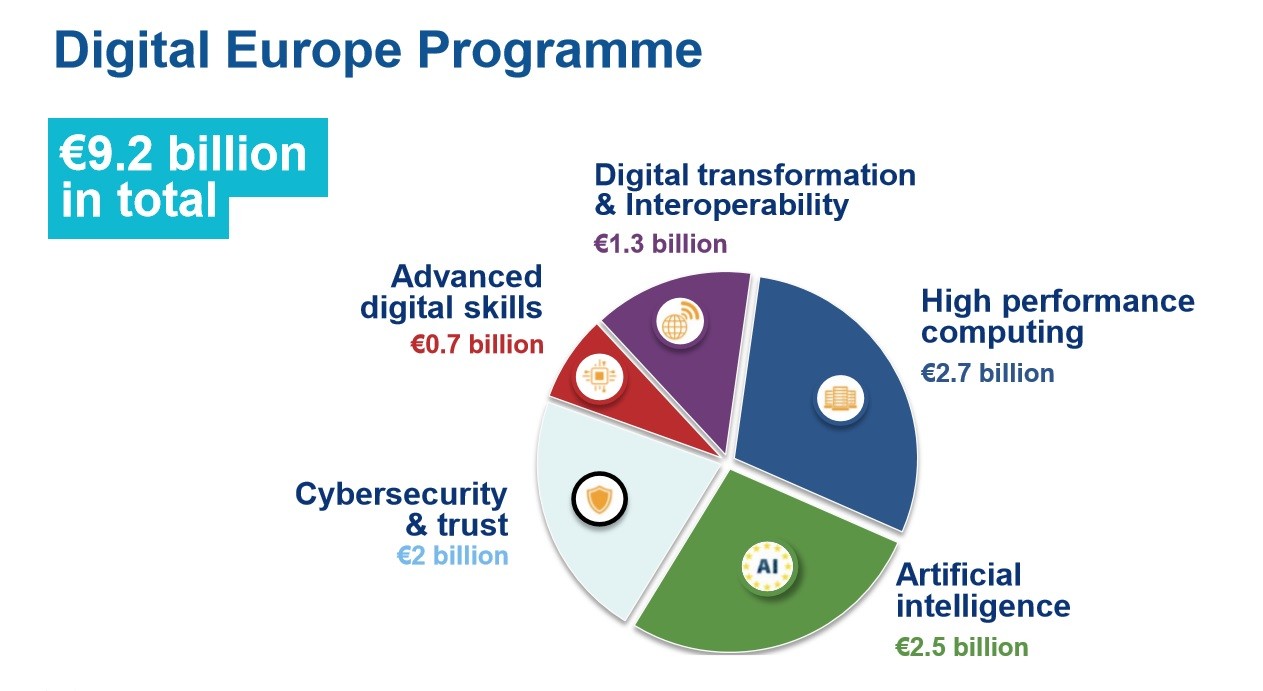- Published on 19 Sep 2019
- About ARTEMIS
Blog Trends & Challenges
The world is changing rapidly and new digital threats need to be turned in opportunities to create a better and stronger Europe. Currently, the EU is being outspent in R&I (in relation to GDP) by the US, China, Japan and South Korea. R&D&I investments will be vital in consolidating Europe’s lead.
We can say that we are at a paradigm shift in the Digital Transformation of European Industry. Embedded Intelligence – incorporating Systems of Systems, Embedded & Cyber-Physical Systems, Electronic Components and Embedded Software Technologies – is at the heart of this transformation. Cyber-Physical Systems in particular serve as a bridge between the technology-rich, vertically-integrated physical world and the data-rich, lateral interaction-based cyber world. With factors like cybersecurity and interoperability as cornerstones, Embedded Intelligence lays the foundation for future breakthroughs such as edge AI, embedded HPC, predictive maintenance and augmented reality.
Let’s summarise the challenges!
High Performance computing
Investment in supercomputers (HPC) is today high on the European Agenda as it will help to get an advantage in technology development for many areas from healthcare and renewable energy to car safety and cybersecurity.
Artificial intelligence (AI)
Earlier this year the EU stated to invest and create ethical guidelines around the deployment of artificial intelligence. The EU plans investments in AI to be part of 'Digital Europe'. Investments are planned to help spread AI across the European economy and society, giving better access for public authorities and businesses, especially small ones, to AI testing and experimentation facilities.
Nevertheless, AI brings it’s challenges. Think of Deepfake. Deepfake is an AI-based technology used to produce or alter video content so that it presents something that didn't in fact occur. Deepfake video is created by using two competing AI systems - one is called the generator and the other the discriminator. Basically, the generator creates a fake video clip and then asks the discriminator to determine whether the clip is real or fake. Each time the discriminator accurately identifies a video clip as being fake, it gives the generator a clue about what not to do when creating the next clip.[1]
Cyber security and trust
Another hot topic Europe will invest in is safeguarding the EU's digital economy, society and democracies through boosting cyber defence and the EU's cybersecurity industry, financing state-of-the-art cybersecurity equipment and infrastructure as well as supporting the development of the necessary skills and knowledge.
Digital skills
This leads us directly to digital skills. Without skills, you can have whatever technology, but no-one will know how to use it. Digital Innovation Hubs will carry out targeted programmes to help small and medium-sized enterprises and public administrations to equip their personnel with the needed advanced skills.
Secondly Europe has a strong focus on learning digital skills at an early age. Having a digitally skilled population and labour force is crucial to drive European competitiveness and to foster an inclusive digital society. As the Commission stated: Today 43% of Europeans do not have basic digital skills. This is why improving the ability of Europeans to use digital technology is one of the priorities of the Digital Single Market and the New Skills Agenda for Europe, of which the Digital Skills and Jobs Coalition is a prominent initiative.

ARTEMIS Report conclusion
Earlier this year, ARTEMIS-IA released an intensive study on the trends and challenges. We clearly noticed that Europe’s major challenge is twofold: value is shifting not only geographically, but also along the value chain itself. China is a leading force in this; having overtaken the EU in terms of relative weight of GERD (Gross Domestic Expenditure on R&D) in recent years, it also announced an investment of USD 100 billion in its ongoing Five-Year Plan and ‘Made in China 2025’ initiative. Meanwhile, value is moving away from hardware and towards Systems of Systems, applications and solutions. This segment of the value chain is expected to grow tenfold over the next decade (reaching somewhere between USD 3.9 and 11.1 trillion), so Europe must act on this challenge and position itself carefully in order to remain competitive.
By expanding investments in Embedded Intelligence-related R&D&I fields, the report makes it clear that long-lasting economic and societal benefits can be secured within the EU. In order to compete with the US, China, Japan and South Korea, these investments should target software to an equal or greater degree than hardware; the ARTEMIS-IA community therefore has a key role to play in maximising value creation in the aftermath of the new industrial revolution.
Sources:
[1] https://en.wikipedia.org/wiki/Deepfake
https://europa.eu/rapid/press-release_IP-18-4043_en.htm
https://artemis-ia.eu/publication/download/embedded-intelligence-trends-challenges.pdf


